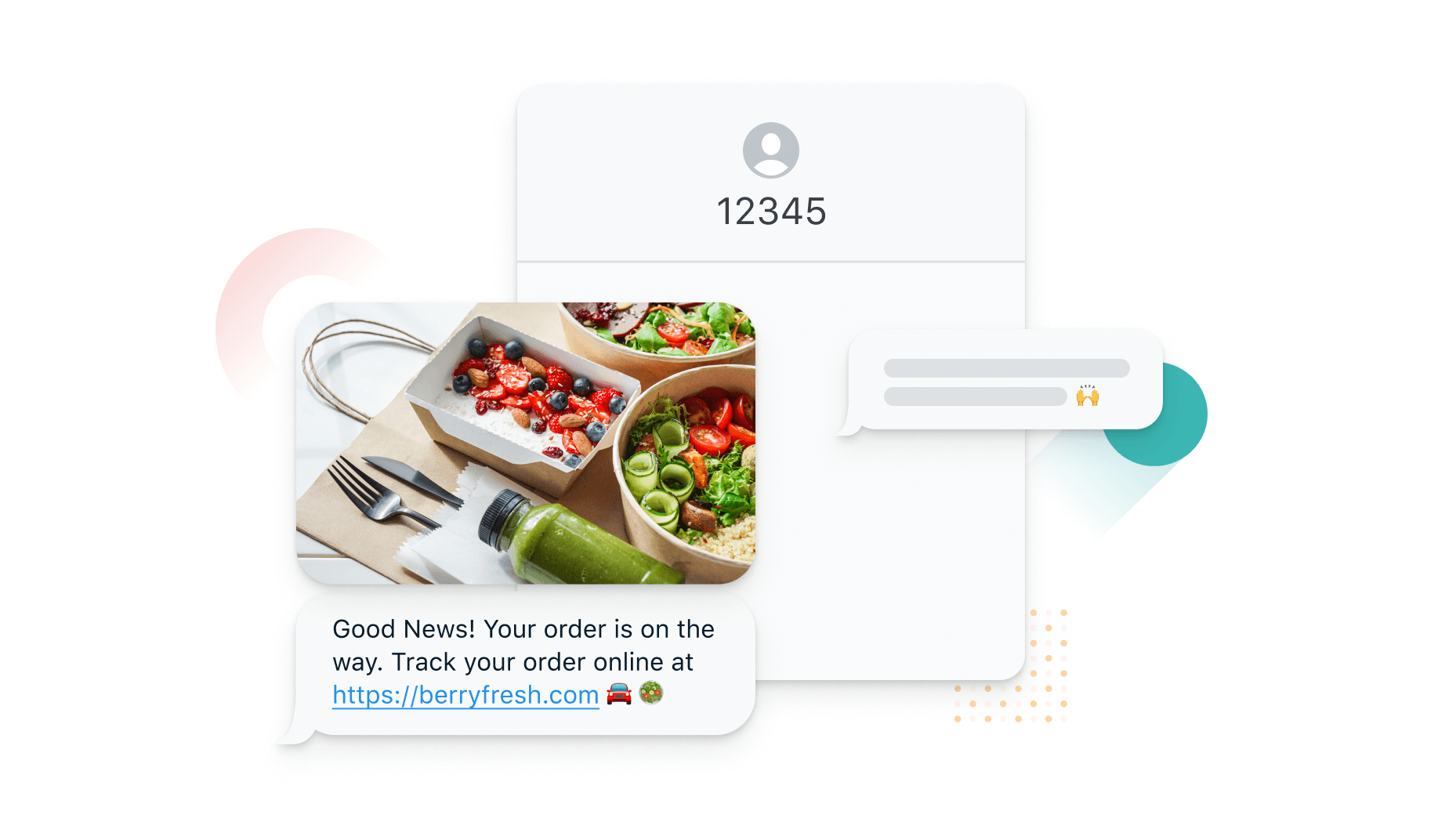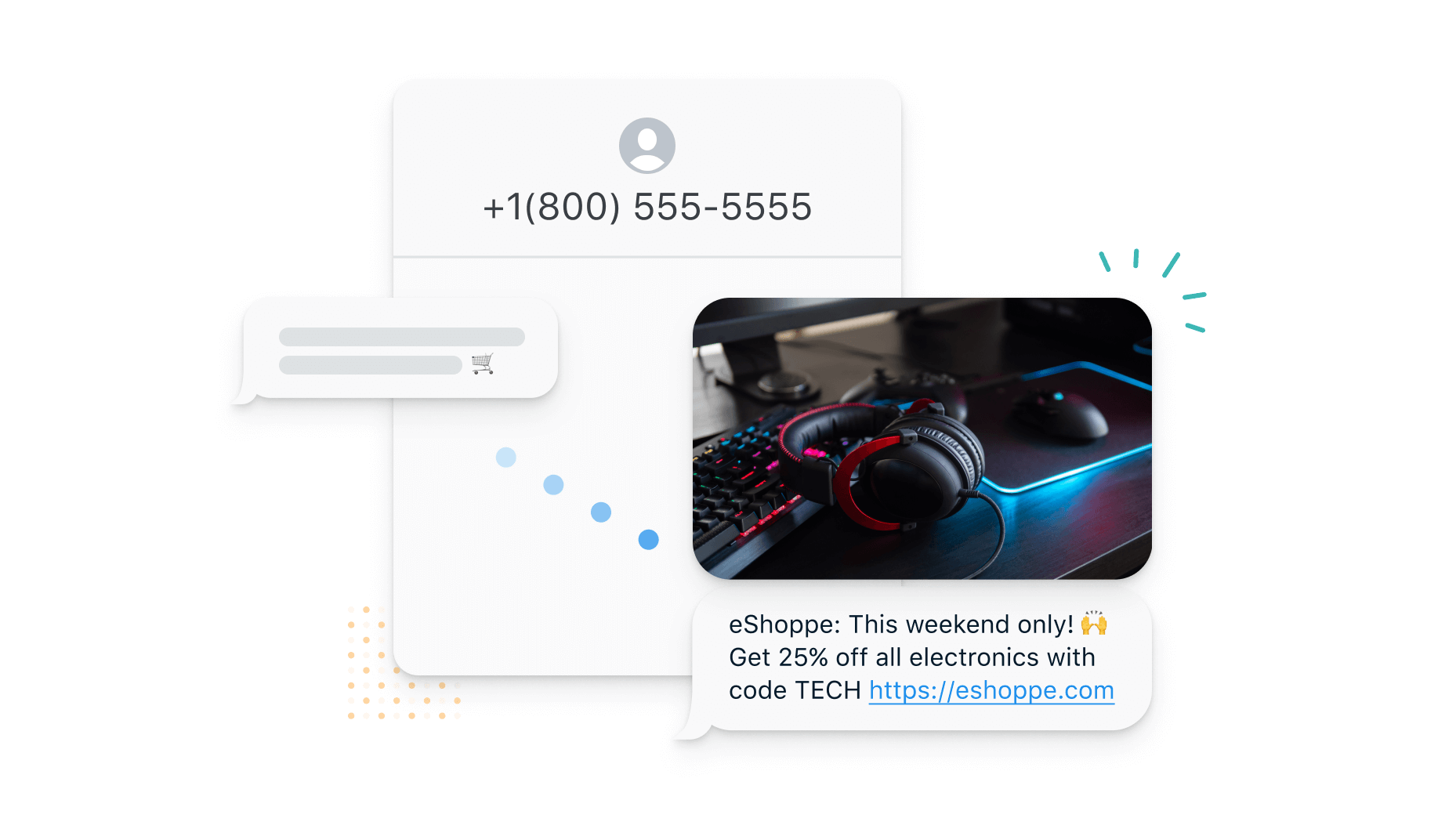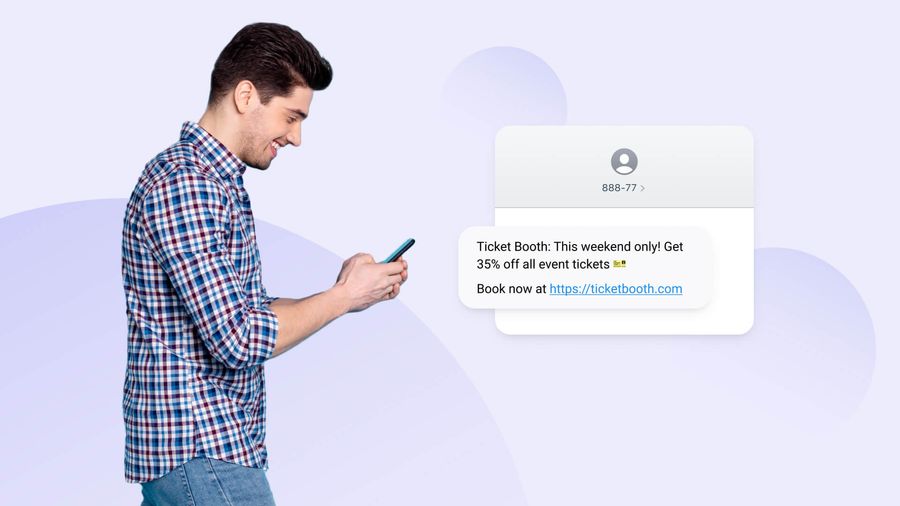We’re continuing to improve our SMS messaging channel, and we’re very excited to announce that we now support short codes as well as toll-free numbers for you to send SMS from. The benefits to using SMS in your messaging strategy are clear, and these new number types are great for companies that want faster sends and to avoid getting flagged as spam.
What are short codes and toll-free numbers?
Short codes and toll-free numbers are both alternatives to long codes, which are your standard phone numbers.
Long code: +1(555) 555-5555
Toll-free: +1(800) 555-5555
Short code: 12345
A short code is a five or six-digit phone number used to send SMS and MMS messages. Short codes are randomly assigned, but certain countries allow you to choose a vanity number. For example, a coffee chain could choose 52883, which spells out LATTE.
A toll-free number is a 10-digit phone number that begins with 8XX. You also have the option to choose a vanity toll-free number.
Using Short Codes for SMS
When should you use a short code?
If you are sending SMS to very large audiences, you may want to use a short code. Short codes send at a rate of 100 message segments per second or more, compared to long codes that traditionally send at a rate of one message segment per second (though this can be higher for companies under new A2P 10DLC regulations, depending on Trust Score and use cases).
If you want to avoid carrier filtering, short codes are your best option. Long codes are subject to carrier filtering, so companies sending more than a few hundred messages a day from a long code run the risk of being marked as spam. Because short codes are approved with wireless carriers, messages sent from short codes don’t face carrier filtering as long as they comply with the use case outlined in your short code application.
If you know texts are effective with your audience and you have the budget, short codes may be a good investment. SMS messaging with short codes will be more expensive than with long codes, as there are additional costs for setup, number rental, and MMS enablement, and they must be leased for a minimum of three months at a time. However, if you know text messaging drives sales and revenue for your business, that may be more than enough to justify the investment.

There are many practical applications for SMS short codes, for example:
- Large one-to-many notification blasts: An e-commerce retailer with a large audience sends a promotional offer for a limited-time sale.
- High volumes of one-to-one transactional notifications: A food delivery app sends many transactional updates to keep all their users updated, such as order confirmations, order status updates, and order delivery messages.
- Time-sensitive alerts: A banking app requires two-factor authentication and relies on a short code to provide better security and reliability.
Short Code Eligibility & Conditions
Twilio currently offers short codes in select countries, including the United States, Canada, and the United Kingdom. Refer to short code guidelines to find out details for your country.
Short codes must be submitted to Twilio and mobile carriers for approval and can only be used to send SMS within the approved country. Certain use cases are not allowed in the United States. Short code programs are also subject to random compliance audits to ensure that companies are using them as approved.
Not all users can receive messages from short codes. Some carriers are not supported and some wireless plans from support carriers don’t include short code messaging capabilities by default.
Interested in getting a SMS short code? Fill out the application in your Twilio project. Twilio will also manage the carrier approval process, which can take 8-12 weeks.
Using Toll-free Numbers for SMS
When should you use a toll-free number?
Toll-free numbers also have a higher throughput than long code phone numbers and send at a rate of three message segments per second. You can also pay more to increase this throughput.
Similar to long codes, toll-free numbers are subject to carrier filtering. However, you can choose to submit your business and message information for carrier verification, which will help reduce the risk of carrier filtering.
If you would like to use a single number for voice and text, using a toll-free number could be a good choice. Companies often use toll-free numbers for easy transitions between SMS and phone calls. Note that OneSignal currently does not support voice capabilities.

Toll-free Eligibility & Conditions
Only US toll-free numbers include SMS capabilities. Some categories of messaging, such as high-risk financial services and third-party debt collection, are specifically forbidden on toll-free SMS.
Interested in getting a toll-free phone number? Similar to long codes, toll-free numbers are provisioned instantly. Simply rent a number in your Twilio dashboard.
Learn More about SMS Marketing Strategy
Want to start using SMS but not sure where to begin? Check out our SMS eBook to learn fundamental SMS messaging strategies, use cases, best practices, and tips for leveraging SMS across industries.
Get the Comprehensive Guide to SMS Marketing



